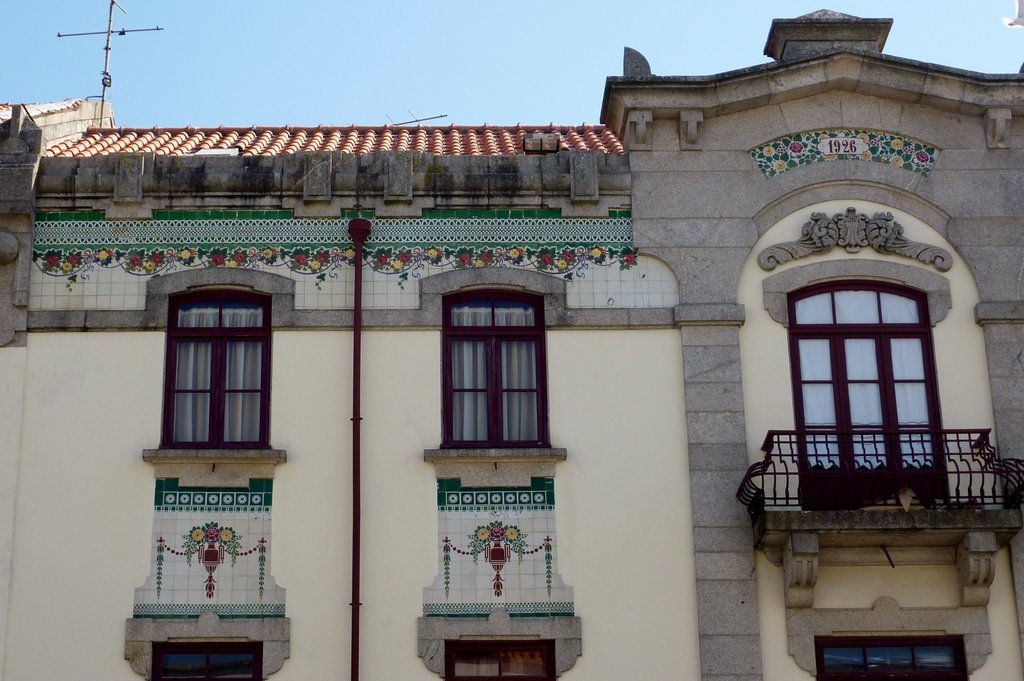#6015. Eclectic 1926 Facade with Decorative Ceramics and Granite Elements
The image showcases a charming facade of a historical building, presumably located in Portugal or northern Spain, as suggested by the characteristic decorative elements. The building demonstrates an interesting combination of architectural styles, incorporating early 20th century Art Nouveau features (as indicated by the "1926" date on the facade) alongside traditional regional motifs.
The facade features an asymmetrical composition. The left section of the building is designed in lighter tones with rich decorative elements. Particularly eye-catching is the exquisite ceramic tiling with floral motifs in the form of flower garlands, positioned at the upper part of the facade and beneath the second-floor windows. A geometric pattern in green complements the composition, creating a rhythmic division of the surface.
The right section of the building is executed in a more austere style using granite blocks, characteristic of traditional Iberian architecture. Above the doorway is a decorative element with stucco work and a small balcony with an elegant wrought iron railing. A large arched window with multi-paned glazing occupies a significant portion of the upper level.
The roof is covered with traditional terracotta tiles, giving the structure an authentic Southern European appearance. An antenna visible on the rooftop indicates the contemporary use of this historical building.
This is an excellent example of regional eclecticism from the early 20th century, where traditional architectural forms were combined with new decorative elements, particularly ceramic panels in Art Nouveau style, creating a unique and vibrant urban architectural identity.
